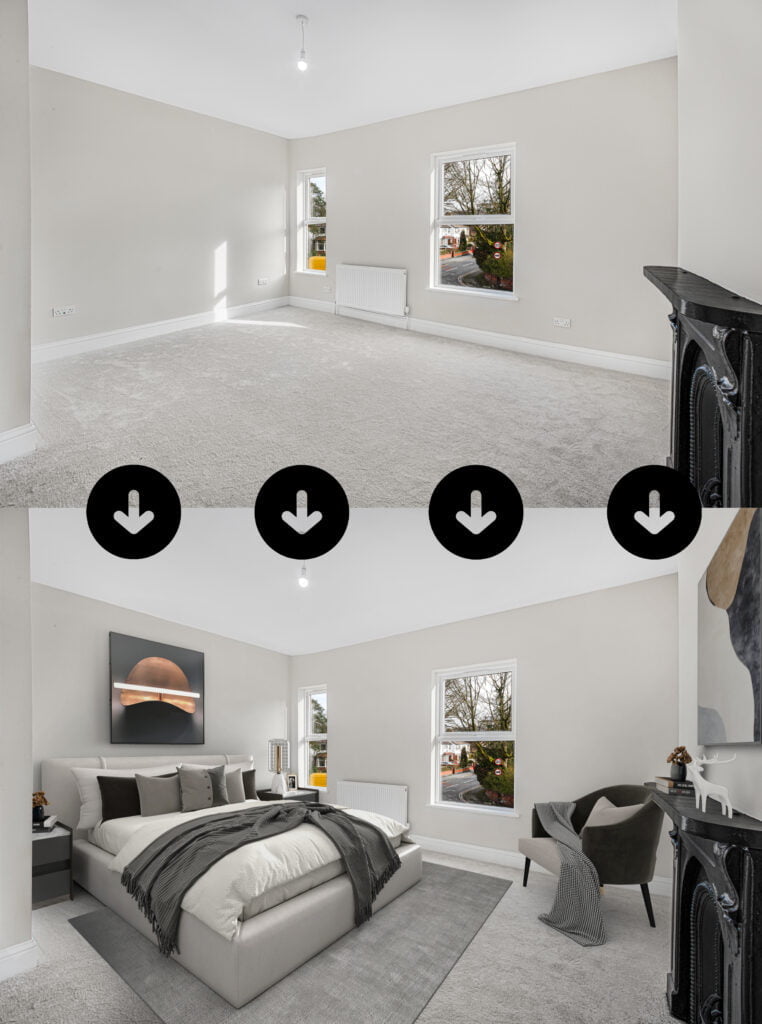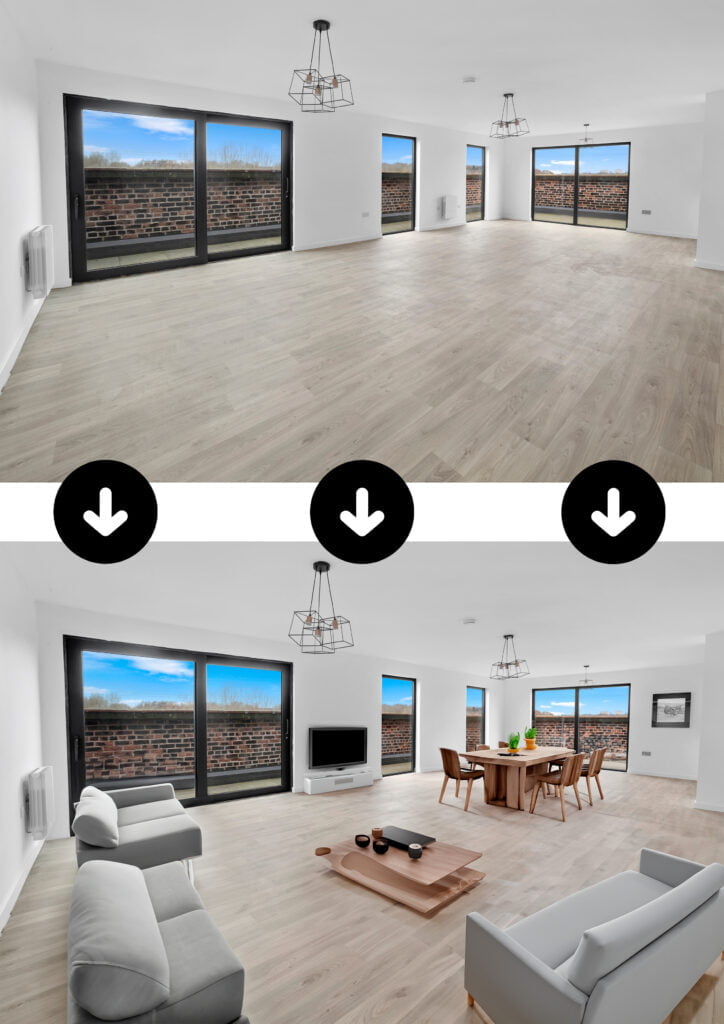In the realm of real estate marketing, property staging plays a pivotal role in attracting potential buyers and enhancing property appeal. With advancements in technology, two innovative approaches have emerged: Artificial Intelligence (AI) and Computer-Generated Imagery (CGI). This article delves into the differences between AI and CGI property staging, exploring their benefits, limitations, and implications for the future of real estate marketing.
1. Exploring CGI Property Staging: CGI property staging involves the creation of photorealistic digital renders of properties, including furnishings, decor, and architectural elements. CGI artists meticulously design and render each detail, resulting in highly polished and customisable virtual staging solutions.

2. Understanding AI Property Staging: AI property staging utilises algorithms and machine learning to virtually stage properties by overlaying digital furnishings and decor onto real estate photographs. This technology analyses property images, identifies spaces, and suggests suitable virtual furnishings based on style preferences and trends.

3. Advantages of CGI Property Staging:
- Photorealism: CGI renders create lifelike representations of properties, allowing potential buyers to envision themselves in the space with unparalleled clarity.
- Customisation: CGI staging enables complete customisation of furnishings, decor, and architectural features to align with specific property aesthetics and branding.
- Unlimited Creativity: CGI artists have the freedom to experiment with various design concepts and styles, pushing the boundaries of creativity in property marketing.
4. Benefits of AI Property Staging:
- Time Efficiency: AI algorithms can swiftly stage multiple properties, reducing turnaround time for marketing materials.
- Cost-Effectiveness: AI staging is often more affordable than traditional staging methods, eliminating the need for physical furnishings and decor.
- Flexibility: AI staging offers a wide range of virtual furniture styles and configurations to suit diverse property aesthetics and target markets.
5. Limitations and Challenges:
- AI Limitations: AI staging may lack the nuanced design choices and creativity of human staging professionals, resulting in less personalized and generic virtual furnishings.
- CGI Complexity: CGI staging requires skilled artists and extensive rendering processes, which can be time-consuming and costly for high-volume projects.
- Realism vs. Cost: Achieving photorealistic CGI renders often comes with a higher price tag, posing challenges for budget-conscious property marketers.
6. Future Trends and Integration: As technology continues to evolve, the integration of AI and CGI in property staging is poised to revolutionize real estate marketing. Hybrid approaches that combine the efficiency of AI with the realism of CGI may emerge, offering the best of both worlds in property staging solutions.
AI and CGI property staging represent groundbreaking advancements in real estate marketing, offering innovative solutions to enhance property appeal and attract buyers. Understanding the strengths, limitations, and future trends of AI and CGI staging is essential for property marketers looking to stay ahead in an increasingly competitive market.
At Hovver, we embrace cutting-edge technology to deliver exceptional property marketing solutions. Whether utilising AI for efficient virtual staging or CGI for photorealistic renders, we tailor our services to meet the unique needs of our clients. We offer both AI and CGI staging. AI staging at £15 per photo, and CGI staging at £30 per photo. Contact us to elevate your property marketing efforts with the latest in AI and CGI staging technologies.

One Response